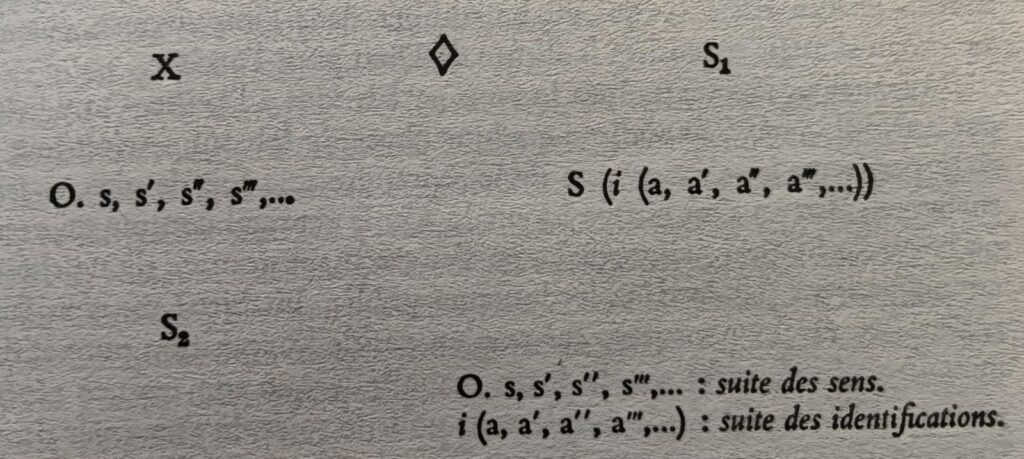I told you in fact that simply by reading Freud‘s text, one could say, and Freud says it, articulates it, that her pain high up on her right thigh, is the desire of her father, and the desire of the friend of her youth, that it is every time that she evokes in the history of her illness, the moment that she was entirely subjected to the desire of her father, to the demand of her father, and when scarcely on the margin there was being exercised this attraction of the desire of the friend of her youth which she reproached herself for taking into consideration; and that the pain in her left thigh, is the desire of her two brothers-in-law, in so far as one represents the good masculine desire, the one who had married her younger sister, and the other the bad who besides has been considered by all of these women, as a very bad man. Beyond this remark, namely of what must be considered before understanding what our interpretation of desire means, the fact is that in the symptom, and that is what conversion means, desire is identical with the somatic manifestation which is its front just as it is its back.
Jacques Lacan, Seminar Book 5 – The formation of the unconscious (1957-1958), Translated by Cormac Gallagher, p 322
Je vous ai parlé d’Elizabeth von R, dont je vous disais qu’à lire simplement le texte de Freud, on peut formuler, car lui-même l’articule, que sa douleur du haut de la cuisse droite, c’est le désir de son père et celui de son ami d’enfance. En effet, cette douleur intervient chaque fois que la patiente évoque le moment où elle était entièrement asservie au désir de son père malade, à la demande de son père, et qu’en marge s’exerçait l’attraction du désir de son ami d’enfance, qu’elle se reprochait de prendre en considération. La douleur de sa cuisse gauche, c’est le désir de ses deux beaux-frères, dont l’un, l’époux de sa plus jeune sœur, représente le bon désir masculin, et l’autre, le mauvais celui-ci a par ailleurs été considéré par toutes ces dames comme un fort méchant homme. Au-delà de cette remarque, ce qu’il faut considérer avant de comprendre ce que veut dire notre interprétation du désir, c’est que dans le symptôme et c’est cela que veut dire conversion, le désir est identique à la manifestation somatique. Elle est son endroit comme il est son envers
Jacques Lacan., Le séminaire livre V, Les formations de l’inconscient (1957-1958), Seuil, Paris, 1998, p. 336
